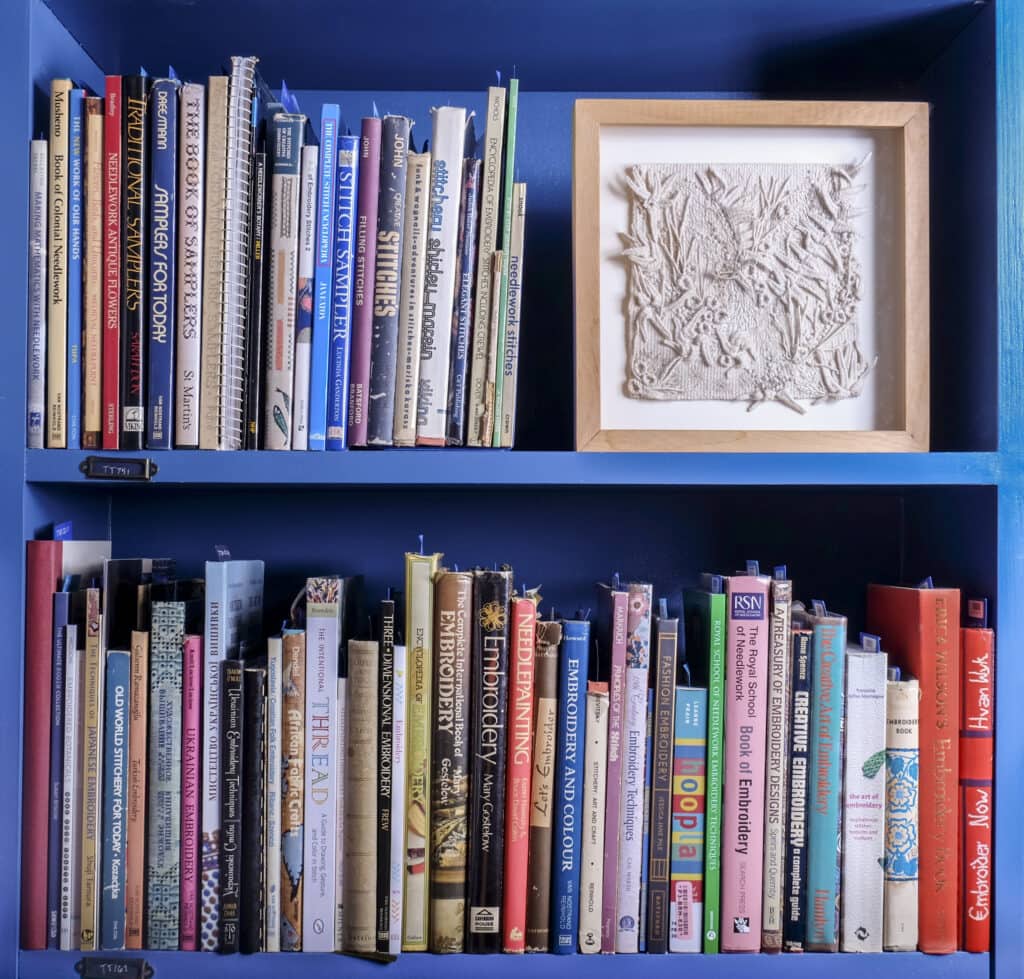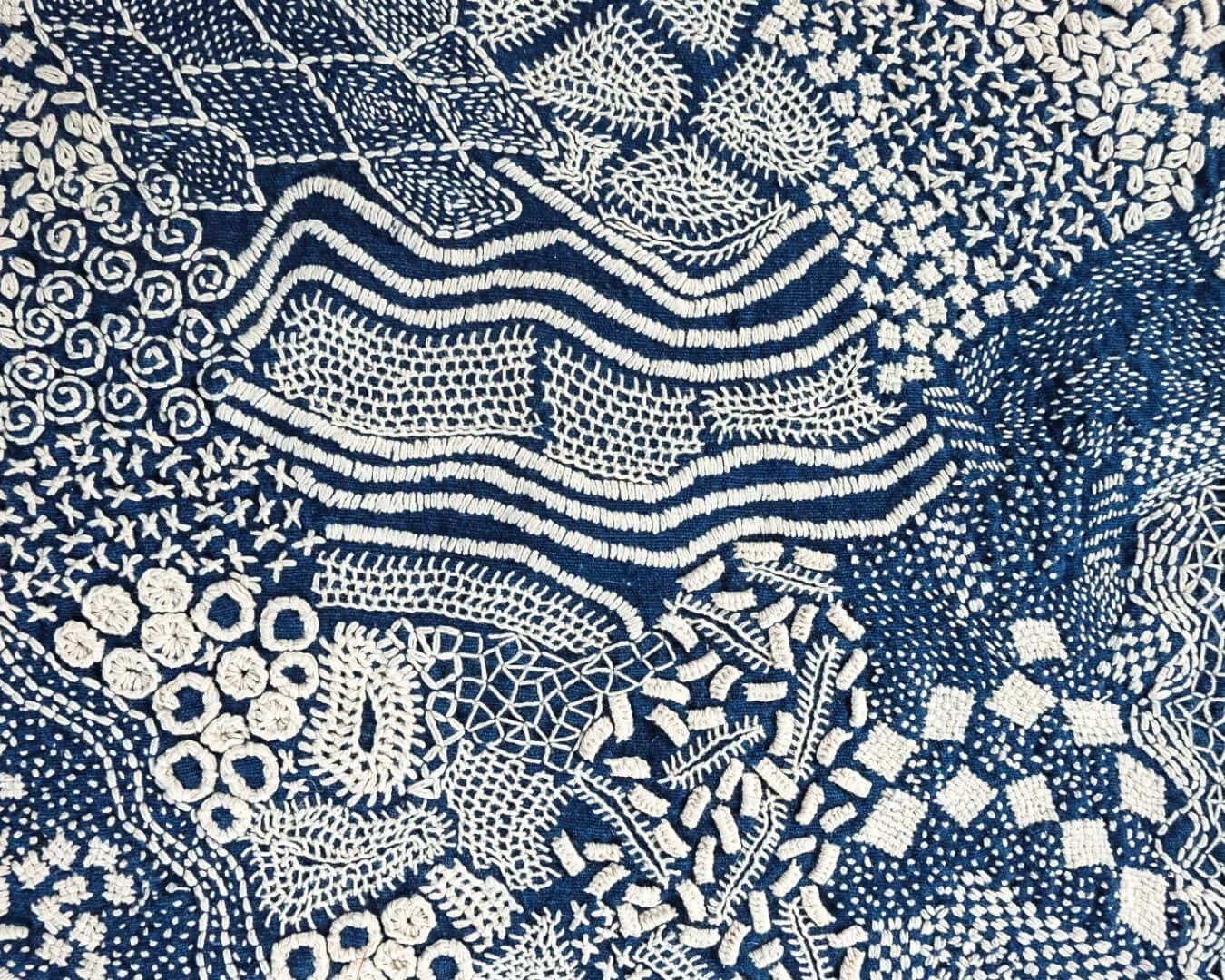
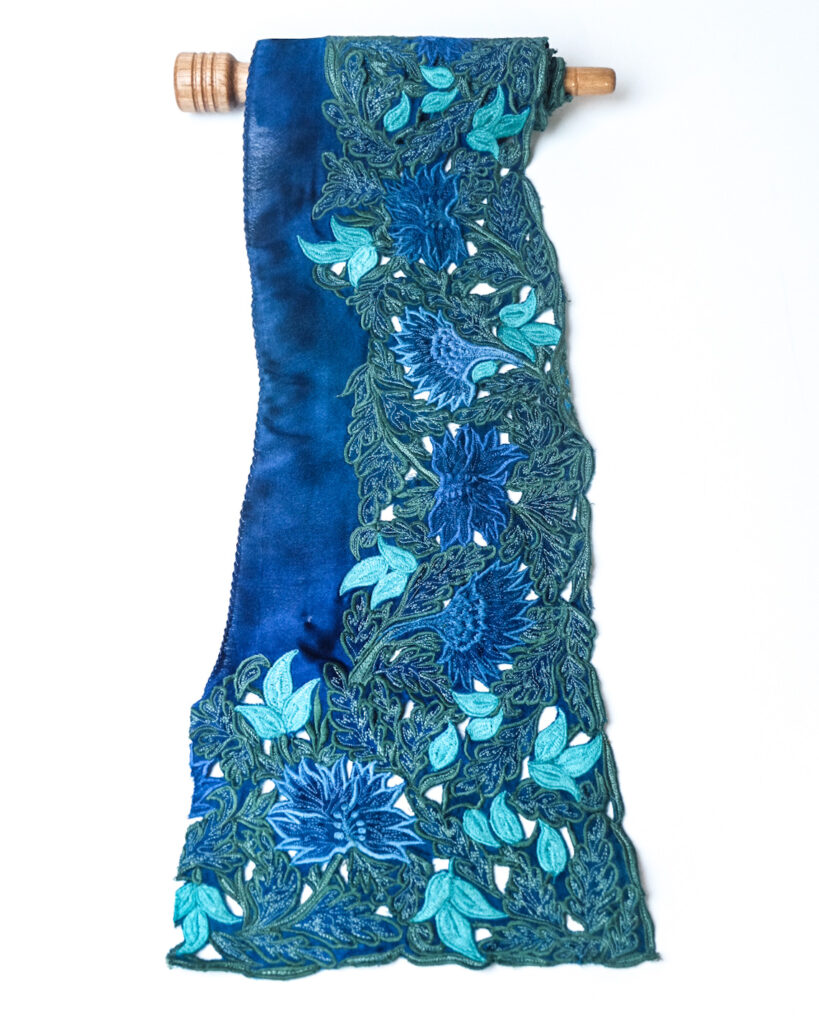
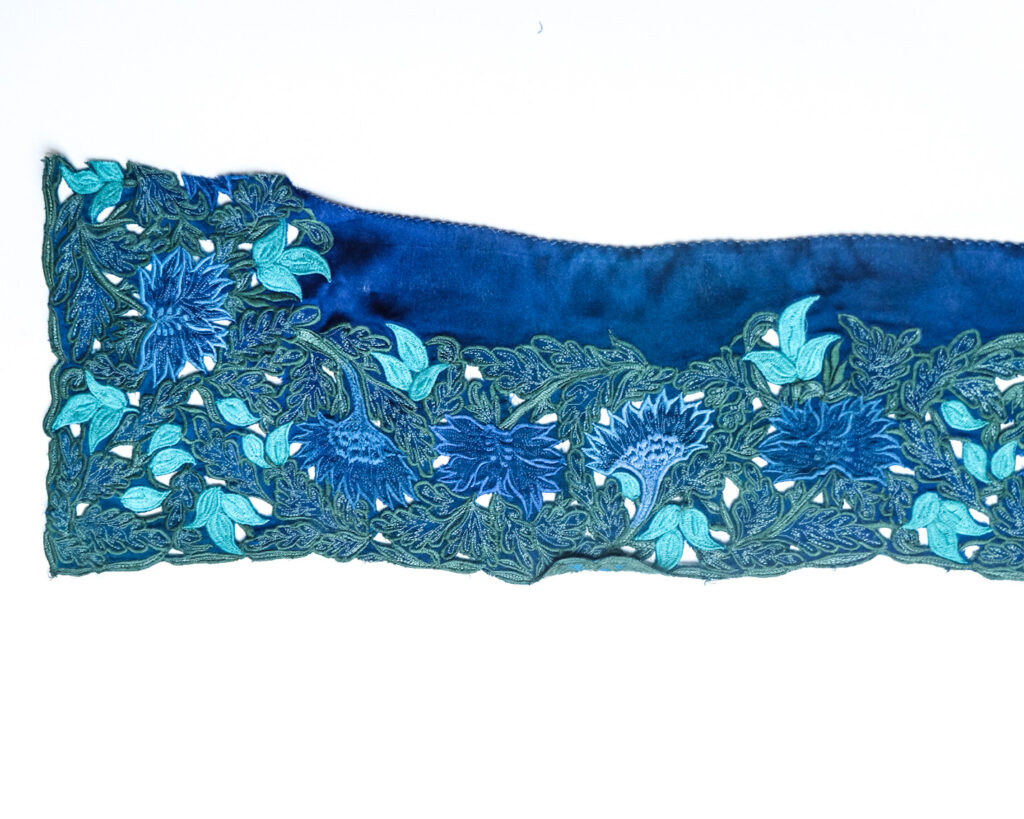
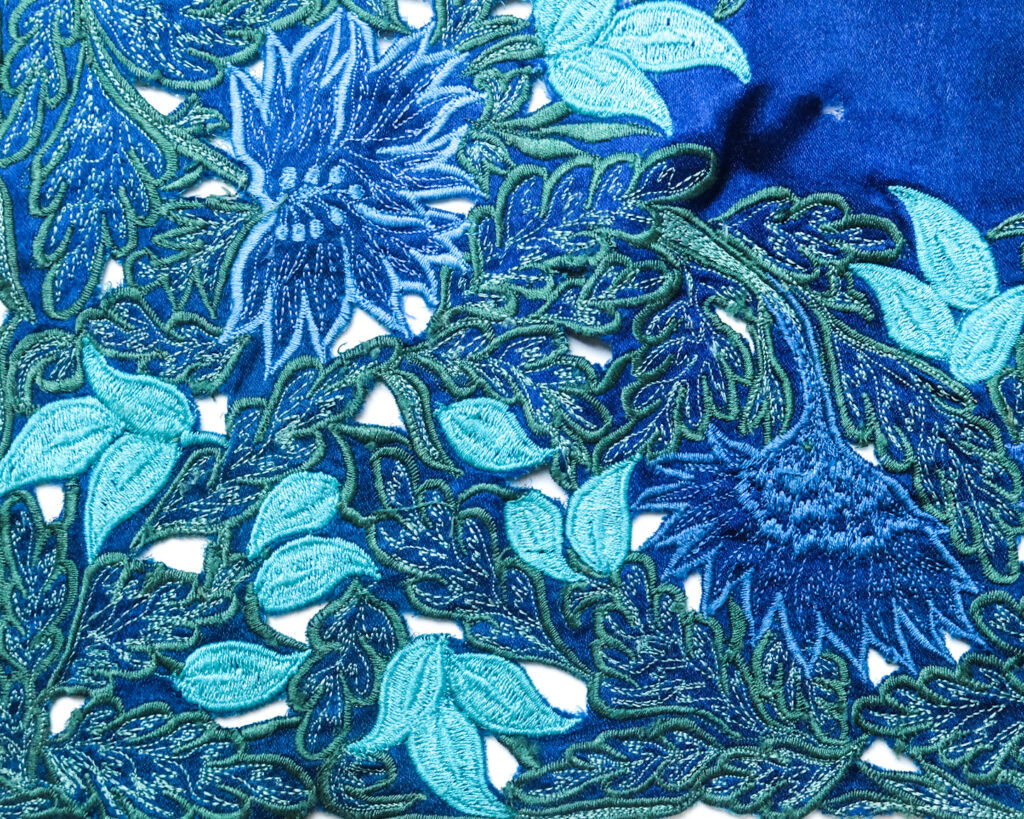
Embroidery has deep roots in human history. Some of the oldest extant examples of embroidered cloth and garments have been found in China, dated from the 5th-3rd century BC. Embroidery began as an elaboration of pre-existing sewing and mending techniques, building and expanding upon the decorative and strengthening potential of the stitch.
With simple needle and thread as tools, embroidery has been widely adapted over the centuries, resulting in richly varied motifs, techniques, and traditions from around the world. Studying technical and material particularities grants us insight into the social, economic, and environmental conditions of a place and of a moment. These histories are made visible and tangible through the stitch work. Whether to imbue a cloth object with story or spiritual meaning, or solely decorative in purpose, we remain fascinated and inspired by the depth and beauty of these craft traditions.
Each small stitch is the record of a hand motion. A tiny piece, thoughtfully placed, filling its role towards a larger vision and purpose. Guided by hand and needle, the thread dances through cloth, nestling amongst the fibers and forever changing the object. Embroidery presents a world of creative communication and self-expression – an opening for deep learning and connection.
At TATTER, we are honored to house a wonderful collection of embroidered works, including objects, garments, buttons, trims, and more. Though the names of many embroiderers through history have not been recorded, we can learn part of their story, and help to honor it, through the preservation and study of their work. In celebration of World Embroidery Day, we have selected a few embroidered pieces from the collection to highlight:
Embroidered sari trim (Call # OB.FR.0013)
This sari trim features beautiful embroidery and cut-work. Blue and green stitches create botanical motifs on the deep blue satin ground. It was likely made in India, date unknown.
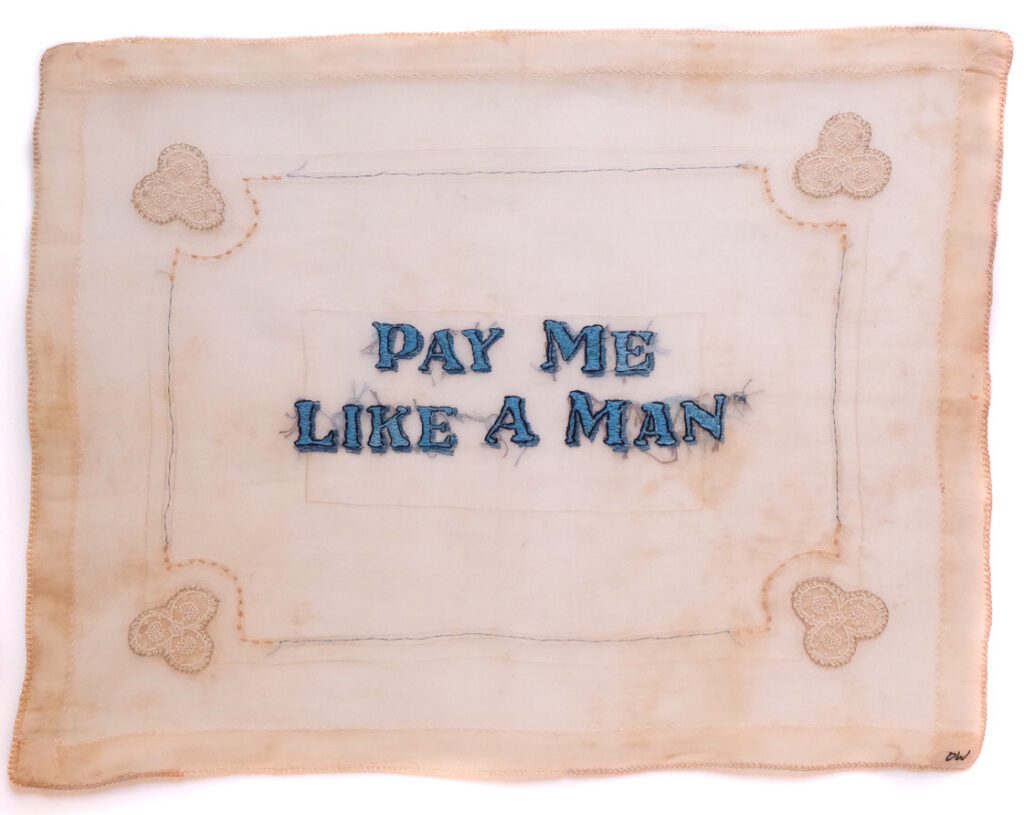
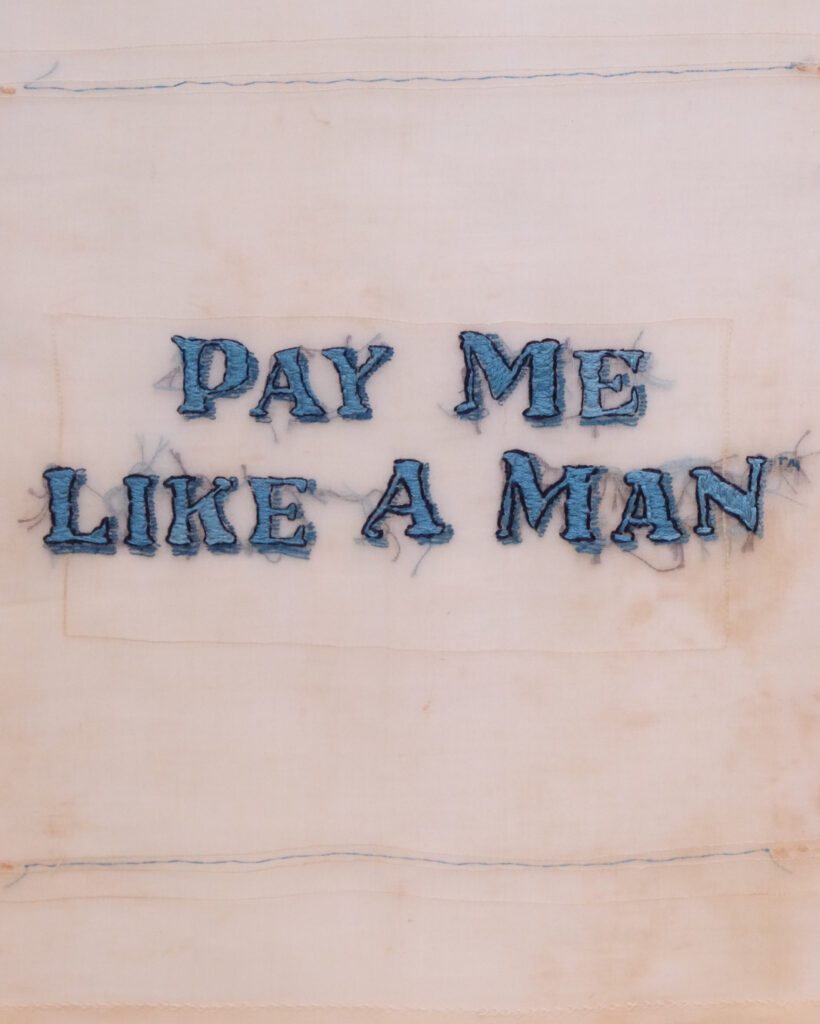
“Pay Me Like A Man” (Call # OB.AO.0011)
“Pay Me Like A Man” is an embroidery from 2018 by artist and activist Diana Weymar (Canadian). The piece features blue and black embroidery floss on a vintage textile. The textile is translucent, making visible the knots and threads on the back of the piece, revealing the stitching process and the hand of the maker.
Embroidered Cloth (Call # OB.AO.0002)
This embroidered cloth depicts an aerial landscape, stitched by artist and designer Somporn Intaraprayong (Thai). The densely placed white stitches stand raised against the deep blue background, creating varied textures and visual intrigue.
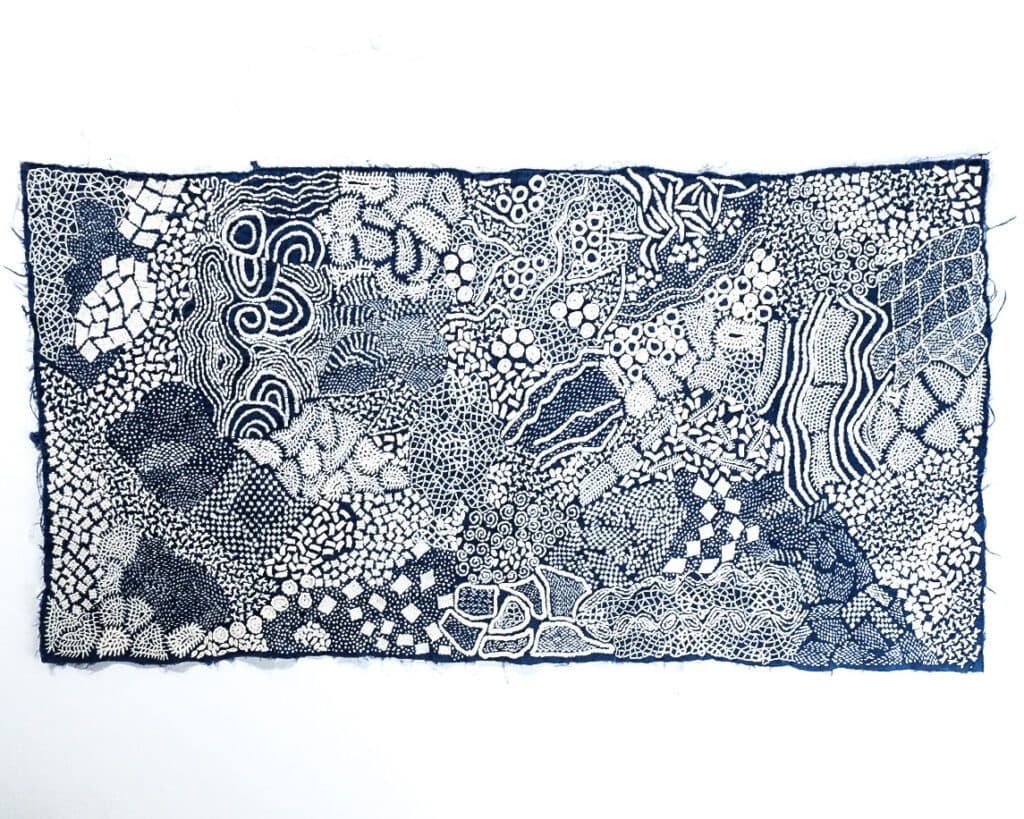
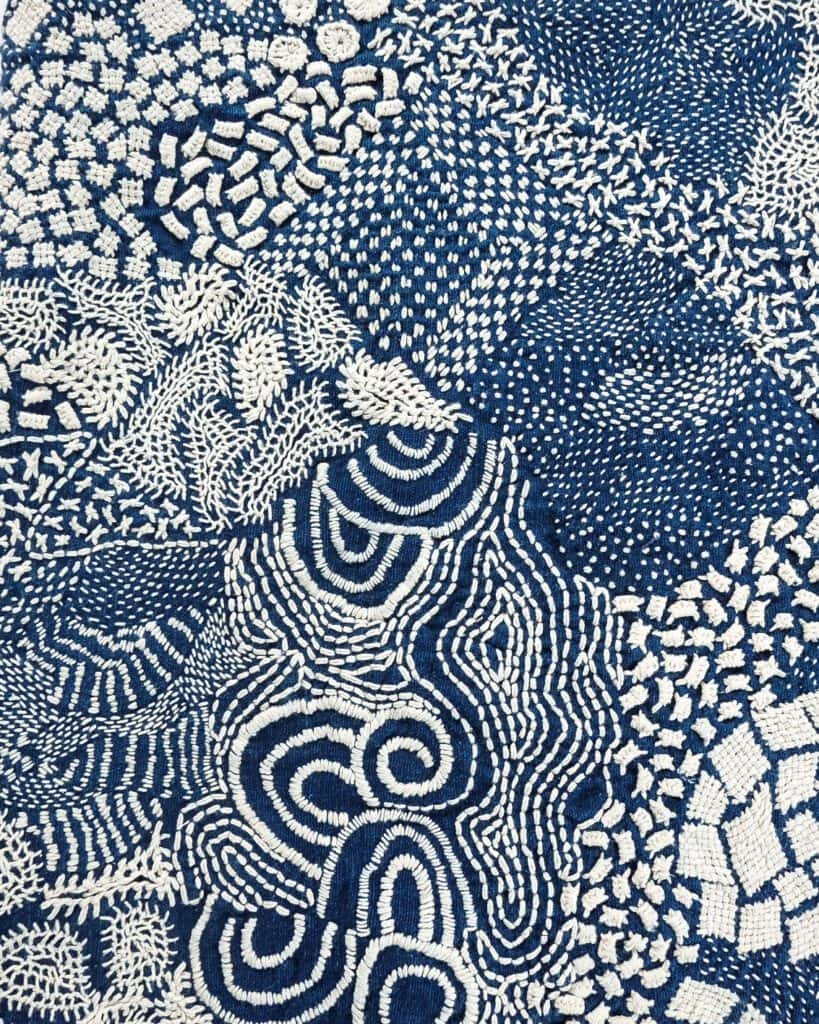
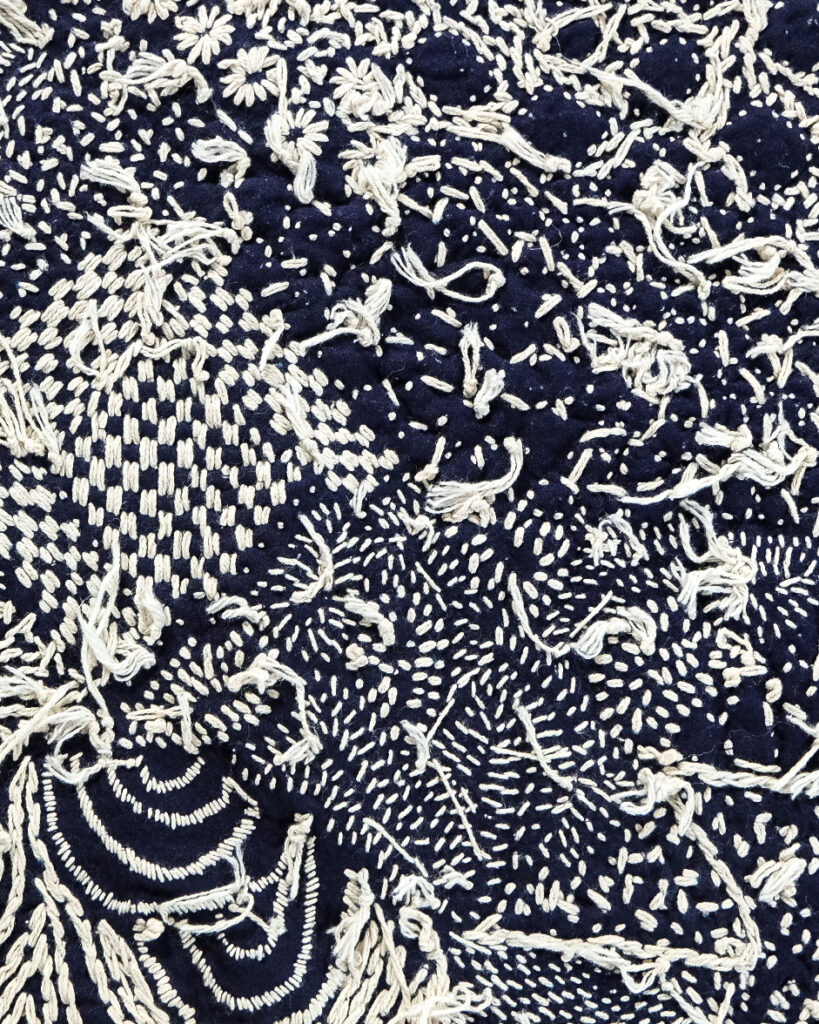
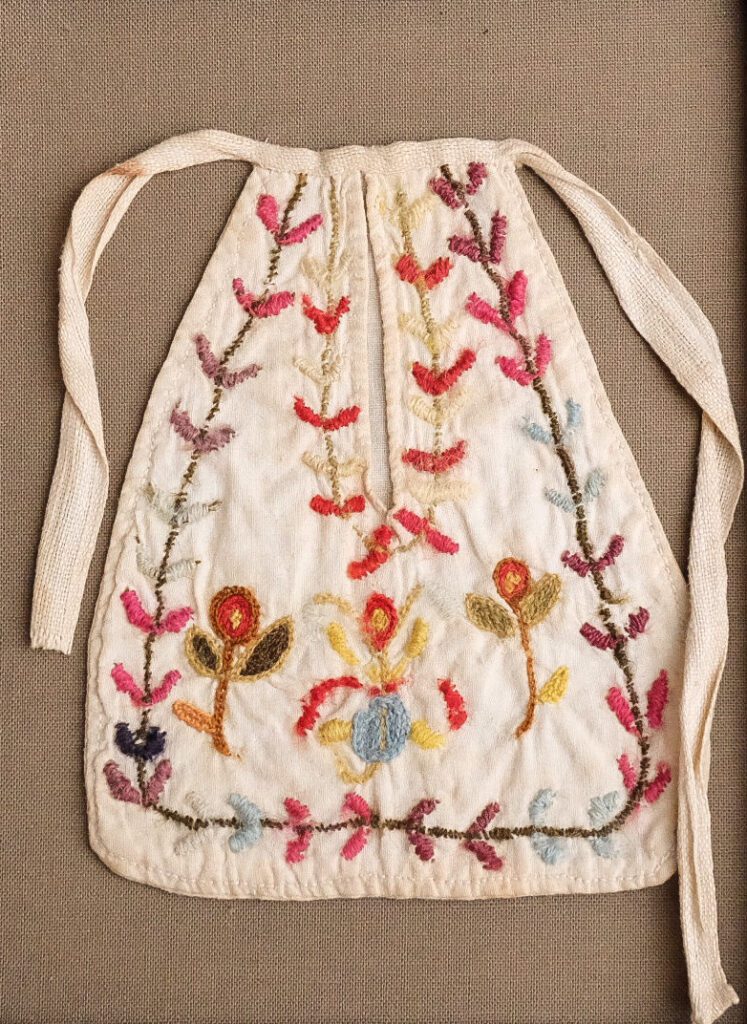
Miniature Tie-On Pocket (Call # OB.AO.0016)
A rare find, this miniature tie-on waist pocket features floral-patterned crewelwork embroidery, possibly made for a doll. Crewelwork utilizes wool thread on linen cloth to create a raised image. Made ca. 1810 in the United States, this piece offers a wonderful example of crewelwork techniques and imagery popular in the early 19th century.
Embroidered Skirt (Call # OB.CO.0045)
This skirt is heavily embroidered, with repeating patterns of dense floral imagery along the sides, waistband, and hem. The floral motifs are echoed in the lace trim below. Date unknown.
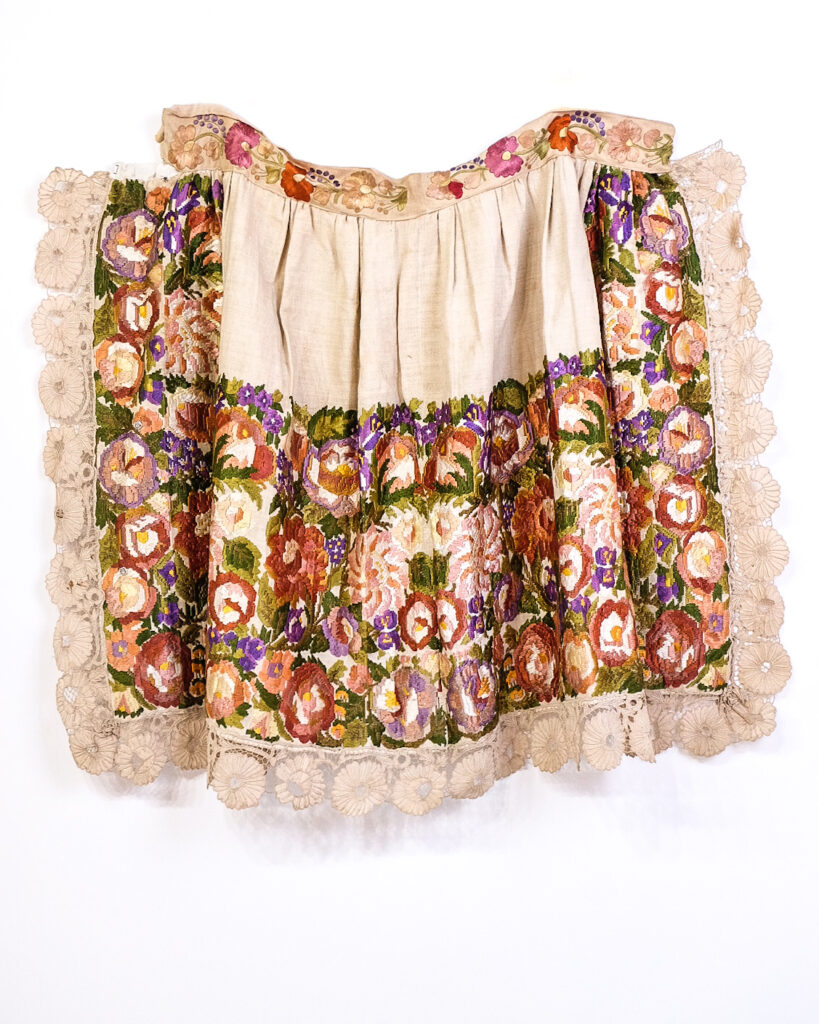
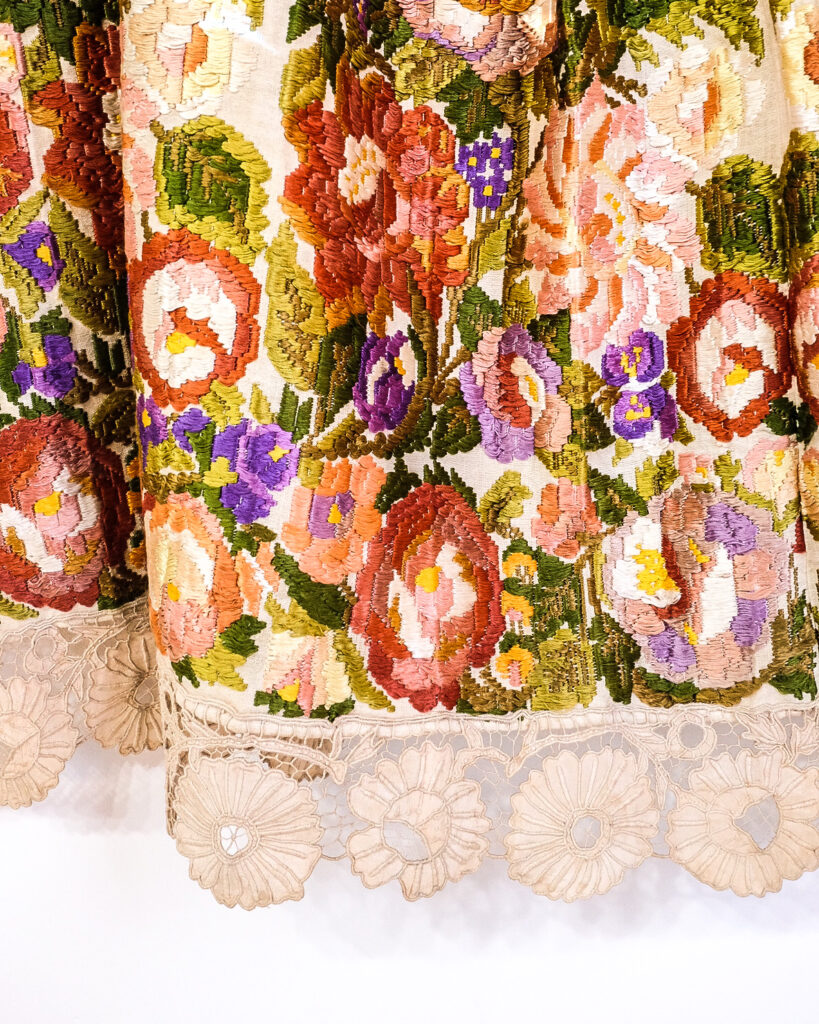
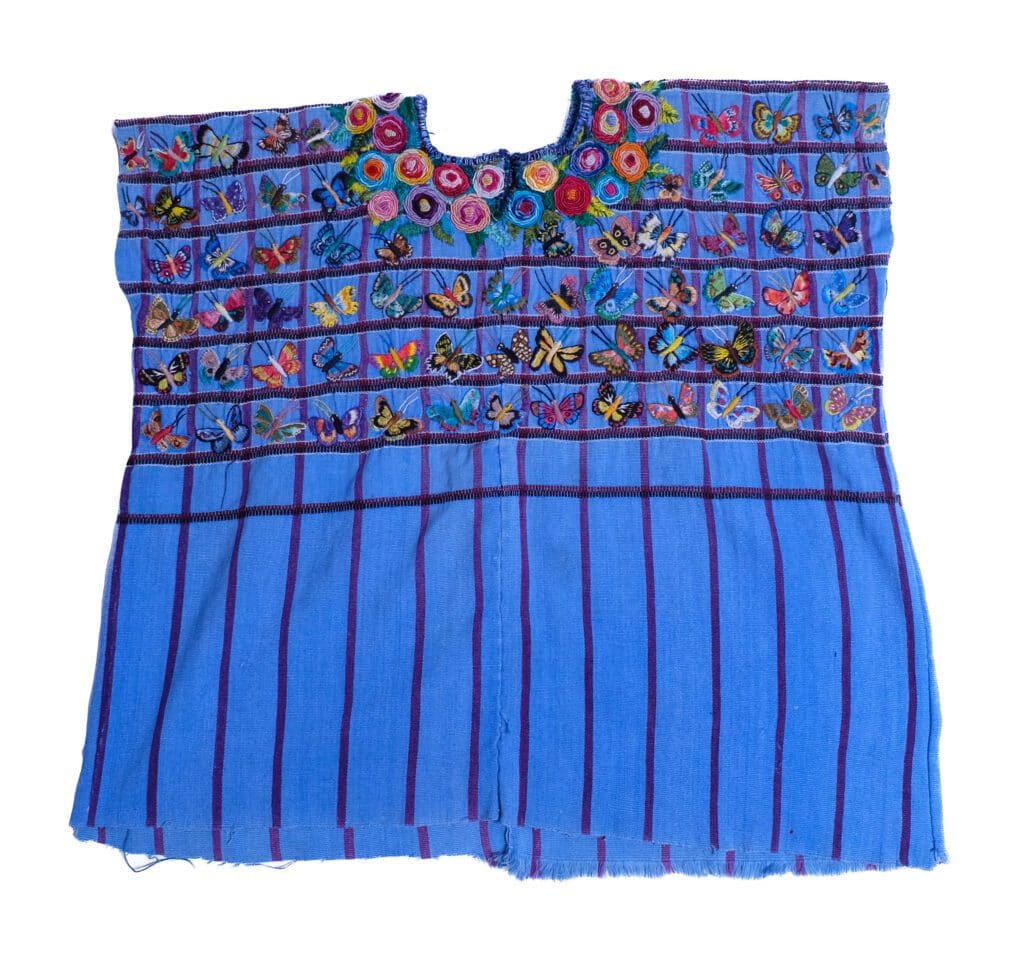
Embroidered Guatemalan Huipil
A huipil is a traditional garment worn by indigenous women from central Mexico to Central America. They are typically made from two or three pieces of cloth, loose-fitting, and range in length. Some contemporary examples are made from commercial cloth, while traditionally the cloth is woven on a backstrap loom. This blue huipil features vertical stripes, with purple and black supplementary wefts on the top half of the garment creating a horizontal stripe and grid pattern. Multicolor butterflies are embroidered with satin stitch, decorating the top half of the garment. The square neckline is finished with blanket stitch, with incredible bullion stitch flowers along the neck. This huipil was made in Santiago Atitlán, Sololá, Guatemala, with cloth woven on a backstrap loom. From the Nancy Romero collection.
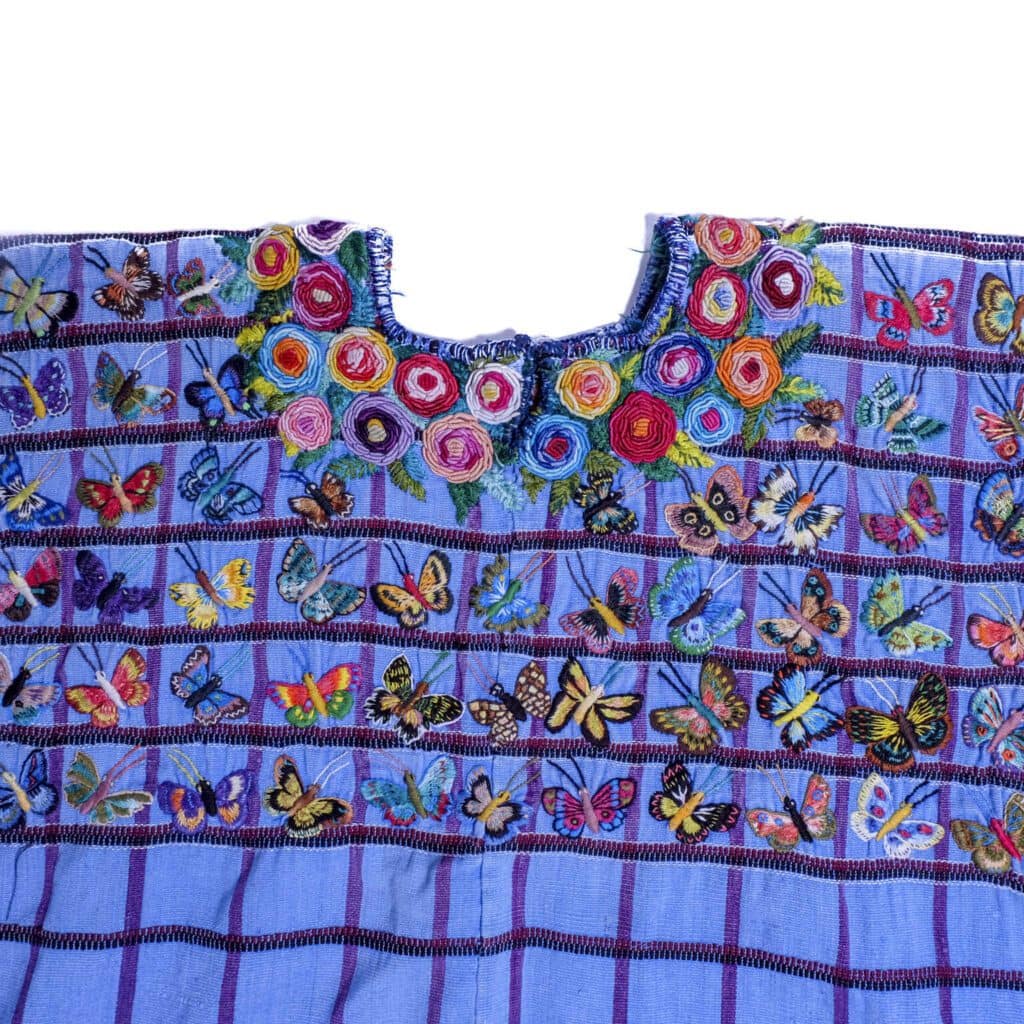
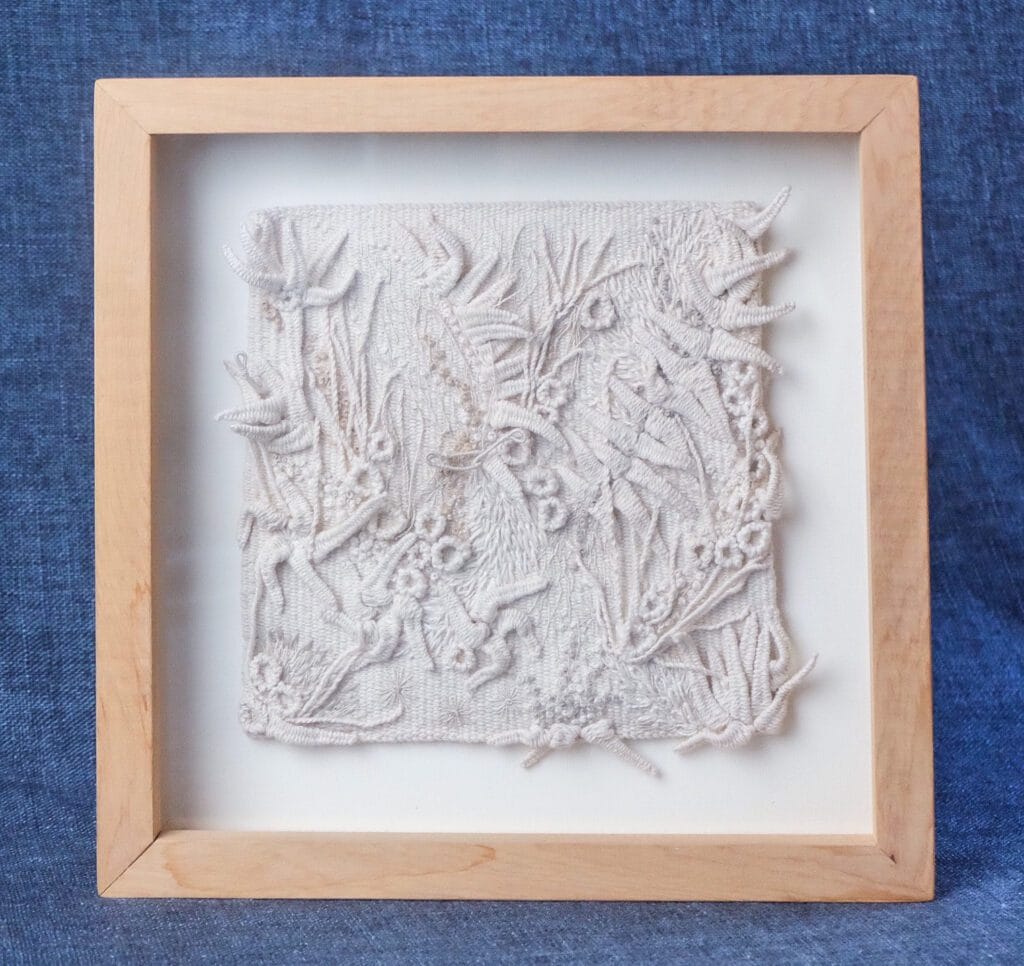
Floral Weaving and Embroidery (Call # OB.AO.0013)
This piece was made by Daniela Vera in 2016. The ground is woven, with embroidered stitches and knots adding textural dimension to the cloth. Threads and woven, leaf-like protrusions catch light and create flickering shadows across the monochrome background.
These embroidery pieces, along with many others, are available to view by request if you visit our library in person!
BROWSE THE LIBRARY COLLECTION ONLINE
